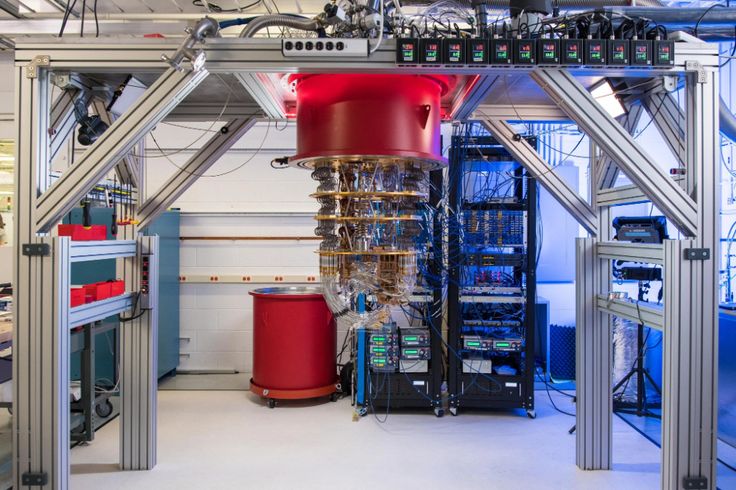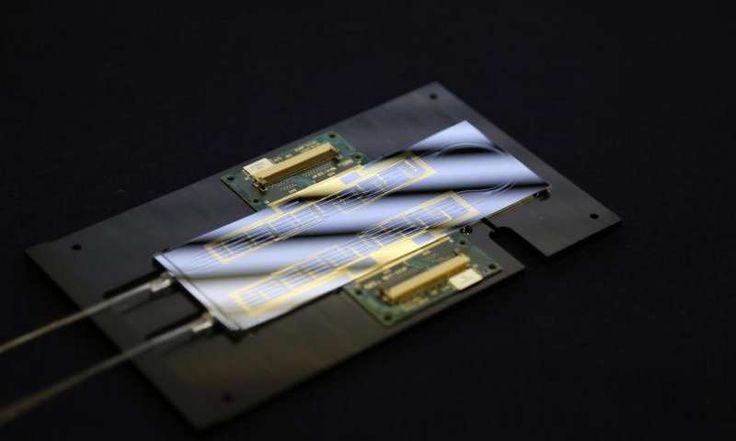The world stands at the precipice of a new computational era. For decades, our digital lives have been powered by classical computers, relying on bits that are either 0 or 1. But a silent revolution is brewing, one driven by the mind-bending principles of quantum mechanics. While the hardware — the quantum computer itself — grabs headlines, the true unlocking of its immense potential hinges on a less visible but equally critical component: quantum software. These breakthroughs in quantum software are not just about writing code for exotic machines; they represent a fundamental reimagining of algorithms, programming paradigms, and the very way we approach complex problems. They are, quite literally, the blueprint for computing’s future, poised to solve challenges currently deemed impossible for even the most powerful supercomputers.
The Quantum Leap: Why Software is Crucial for Quantum Hardware
To truly appreciate the significance of quantum software breakthroughs, it’s essential to understand the unique challenges and opportunities presented by quantum hardware, and why it demands an entirely new software stack.
A. The Unfamiliar World of Quantum Hardware
Unlike classical computers built on silicon transistors, quantum computers operate using phenomena at the subatomic level, specifically qubits.
- Qubits vs. Bits: A classical bit is a definite 0 or 1. A qubit, however, leverages quantum properties like superposition, meaning it can exist as 0, 1, or a combination of both simultaneously. This dramatically increases the information density a quantum system can hold.
- Entanglement: Perhaps the most counter-intuitive quantum phenomenon, entanglement links the states of two or more qubits, regardless of their physical distance. A change to one entangled qubit instantly affects the others, allowing for complex, parallel computations that defy classical intuition.
- Fragility and Decoherence: Qubits are incredibly fragile. They easily lose their quantum properties (a process called decoherence) when interacting with their environment. This necessitates extreme isolation, often requiring cryogenic temperatures near absolute zero, ultra-high vacuums, or specialized traps, making quantum hardware notoriously difficult to build and maintain.
- Error Rates: Due to their fragility, current quantum computers suffer from high error rates. This is a major hurdle for reliable computation and underscores the critical need for sophisticated error correction, much of which will be handled by software.
- Limited Qubit Counts: Despite rapid progress, the number of stable, interconnected qubits in current quantum computers (often referred to as Noisy Intermediate-Scale Quantum or NISQ devices) is still relatively small. This limits the complexity of problems they can tackle, making efficient quantum software even more vital.
B. The Gap Between Quantum Physics and Practical Computation
The inherent differences between classical and quantum mechanics create a massive gap that quantum software must bridge.
- Non-Intuitive Logic: Quantum logic gates (the building blocks of quantum circuits) operate on probabilities and quantum states, not simple Boolean logic. This requires entirely new ways of designing computational steps.
- Specialized Problem Domains: Quantum computers are not general-purpose machines designed to browse the web or run spreadsheets faster. They are specialized processors meant to excel at a very specific class of problems that are intractable for classical computers (e.g., certain optimization problems, molecular simulations, factoring large numbers).
- Orchestrating Quantum Hardware: Quantum software must manage the intricate dance of qubits, execute quantum gates with precise timing, and handle the noisy and error-prone nature of the underlying hardware. This requires a low-level understanding of the specific quantum architecture.
- No Direct Translation: You can’t simply compile classical code for a quantum computer. Quantum algorithms are fundamentally different, requiring novel mathematical approaches and computational thinking.
This complex landscape means that without parallel innovation in quantum software, quantum hardware, no matter how powerful, will remain largely a scientific curiosity rather than a practical tool.
The Pillars of Quantum Software Breakthroughs
Quantum software is a multi-layered ecosystem, encompassing everything from low-level control systems to high-level programming languages and applications. Breakthroughs are occurring across all these layers.
A. Quantum Algorithms: The New Recipes for Computation
At the heart of quantum software are quantum algorithms—the unique sets of instructions designed to run on quantum computers, exploiting superposition and entanglement to solve specific problems more efficiently than classical algorithms.
- Shor’s Algorithm: One of the most famous, capable of efficiently factoring large numbers. Its existence highlights the threat quantum computers pose to modern public-key cryptography (like RSA). While not yet practically implementable on large scales, its theoretical power is immense.
- Grover’s Algorithm: Offers a quadratic speedup for searching unsorted databases. For an N-item database, a classical computer needs N steps on average; Grover’s algorithm can do it in roughly steps.
- Quantum Approximate Optimization Algorithm (QAOA): Designed for solving combinatorial optimization problems (e.g., finding optimal routes, resource allocation). It’s a hybrid algorithm, combining quantum circuits with classical optimization.
- Variational Quantum Eigensolver (VQE): Used in quantum chemistry and material science to find the ground state energy of molecules. It’s another hybrid quantum-classical algorithm, well-suited for NISQ devices.
- Quantum Machine Learning Algorithms: Research into algorithms for tasks like quantum classification, quantum regression, and quantum neural networks, leveraging quantum parallelism for potential speedups in AI.
- Challenges in Algorithm Development: Designing new quantum algorithms is incredibly challenging, requiring deep mathematical and quantum physics knowledge. Proving quantum advantage (that a quantum algorithm is truly faster than the best classical one) is also complex.
B. Quantum Programming Languages and Frameworks
To enable developers to write these complex algorithms, new programming languages and software development kits (SDKs) are emerging, abstracting away some of the low-level quantum mechanics.
- Qiskit (IBM): A leading open-source SDK for working with quantum computers at the level of circuits, pulses, and algorithms. It provides tools for creating, manipulating, and optimizing quantum circuits, and running them on simulators or real quantum hardware. It’s Python-based, making it accessible.
- Cirq (Google): Another open-source framework for programming quantum computers, particularly emphasizing NISQ algorithms and targeting superconducting qubits. It allows for fine-grained control over quantum gates.
- Microsoft Q# (Quantum Development Kit): A domain-specific programming language for quantum computing, integrated with Visual Studio. It provides a rich library of quantum operations and a quantum simulator.
- PennyLane (Xanadu): Focuses on quantum machine learning, allowing developers to build quantum circuits within existing machine learning frameworks like TensorFlow and PyTorch.
- OpenQASM: A low-level assembly-like language for quantum instructions, serving as an intermediate representation that allows different quantum programming frameworks to target various quantum hardware backends.
- Challenges: These languages are still maturing, often requiring a deep understanding of quantum concepts. Debugging quantum code is also significantly more complex than classical code.
C. Quantum Simulators: Testing Without Hardware
Given the scarcity and cost of real quantum hardware, quantum simulators play a crucial role in quantum software development.
- Classical Emulation: These are classical computer programs that emulate the behavior of quantum computers. They are essential for testing quantum algorithms, debugging code, and understanding quantum mechanics without access to physical quantum hardware.
- Scalability Limits: Simulators are limited by the computational power of classical computers. They can typically simulate only up to ~40-50 qubits (depending on the problem’s complexity) before running out of memory or time, which is why real quantum hardware is ultimately needed for larger problems.
- Cloud-Based Simulators: Many cloud quantum platforms offer robust simulators, allowing developers to test their quantum code before submitting it to actual quantum processors.
D. Quantum Cloud Platforms: Accessing the Future
Cloud computing is democratizing access to quantum hardware and software.
- IBM Quantum Experience: Provides free access to real quantum computers and simulators via the cloud, along with Qiskit for programming.
- Google Cloud Quantum AI: Offers access to Google’s quantum processors (like Sycamore) and development tools (Cirq) through the cloud.
- Amazon Braket: A fully managed quantum computing service that provides access to quantum computers from various providers (e.g., IonQ, Rigetti) and simulators from a single interface.
- Azure Quantum: Microsoft’s open quantum ecosystem offering a diverse set of quantum hardware, software, and solutions.
- Benefits: Cloud platforms lower the barrier to entry for quantum research and development, providing scalable infrastructure for simulations and remote access to cutting-edge quantum hardware.
E. Quantum Error Correction (QEC) Software
As qubits are inherently noisy, quantum error correction (QEC) is paramount for building fault-tolerant quantum computers. While QEC involves hardware components, a significant portion of its implementation relies on sophisticated software algorithms.
- Encoding Information: QEC involves encoding a single logical qubit into multiple physical qubits, creating redundancy to protect against errors.
- Detecting and Correcting Errors: Software algorithms continuously monitor these encoded qubits, detect the occurrence of errors, and then apply corrective operations to restore the correct quantum state without destroying the fragile superposition.
- The Overhead Challenge: QEC requires a large number of physical qubits to encode even a few logical qubits, making it incredibly resource-intensive. Software breakthroughs are needed to make QEC more efficient and practical.
Transformative Potential: What Quantum Software Unlocks
The breakthroughs in quantum software, combined with hardware advancements, promise to unlock solutions to problems currently considered impossible, revolutionizing various industries.
A. Accelerating Drug Discovery and Materials Science
Quantum computers are uniquely suited to simulate molecular interactions and material properties at the fundamental quantum level, which is intractable for classical computers.
- New Drug Development: Designing novel pharmaceutical drugs by simulating how molecules bind and interact, drastically accelerating the discovery process and reducing the cost of R&D.
- Advanced Materials: Discovering and engineering new materials with desired properties (e.g., room-temperature superconductors, highly efficient solar cells, lightweight alloys, improved battery materials) by simulating their quantum behavior.
- Catalyst Optimization: Designing more efficient catalysts for industrial processes, leading to reduced energy consumption and lower environmental impact.
B. Revolutionizing Financial Modeling and Optimization
Quantum algorithms can provide significant speedups for complex optimization and simulation problems common in finance.
- Portfolio Optimization: Finding the optimal asset allocation to maximize returns and minimize risk across vast numbers of financial instruments, far exceeding classical capabilities.
- Fraud Detection: Developing more sophisticated algorithms to detect subtle patterns indicative of financial fraud in massive datasets.
- Risk Analysis: Performing complex Monte Carlo simulations for more accurate risk assessment in financial markets.
- Algorithmic Trading: Optimizing high-frequency trading strategies by rapidly processing vast amounts of market data.
C. Enhancing Artificial Intelligence and Machine Learning
Quantum computing offers new paradigms for processing information that could fundamentally enhance AI.
- Quantum Machine Learning (QML): Developing quantum algorithms for tasks like pattern recognition, classification, and deep learning, potentially leading to faster training times or the ability to process more complex datasets than classical ML.
- Quantum Neural Networks: Exploring new types of neural networks that leverage quantum properties for potentially superior learning capabilities.
- Optimization for AI: Quantum algorithms can optimize the parameters of classical machine learning models, leading to more efficient and accurate AI systems.
D. Breaking and Building Next-Gen Cryptography
Quantum computers, particularly with Shor’s algorithm, pose a direct threat to widely used public-key encryption standards.
- Cracking Current Encryption: Once powerful enough, quantum computers could break algorithms like RSA and elliptic curve cryptography, which secure most of our internet communications.
- Developing Post-Quantum Cryptography (PQC): Research and development of new, quantum-safe cryptographic algorithms that can resist attacks from quantum computers. This is a massive area of ongoing software and mathematical development.
E. Optimizing Logistics and Supply Chains
Many real-world logistics and supply chain problems are optimization challenges that quickly become intractable for classical computers as they grow in size.
- Route Optimization: Finding the most efficient routes for delivery fleets, air traffic control, or public transportation networks, considering real-time variables like traffic and weather.
- Resource Allocation: Optimizing the allocation of resources (e.g., personnel, machinery, raw materials) in complex manufacturing or operational settings.
- Supply Chain Resilience: Simulating and optimizing complex global supply chains to improve resilience against disruptions and enhance efficiency.
F. Advanced Materials and Nanotechnology
Beyond discovering new materials, quantum computing could enable the precise design of structures at the nanoscale.
- Nano-device Design: Simulating the behavior of materials and devices at the atomic and molecular level to design advanced semiconductors, sensors, and nanoscale machines.
- Superconducting Materials: Accelerating the discovery of materials that exhibit superconductivity at higher temperatures, which could revolutionize energy transmission and storage.
Navigating the Roadblocks: Challenges in Quantum Software Development
Despite the immense promise, the development and widespread adoption of quantum software face significant hurdles that researchers and engineers are actively working to overcome.
A. Abstraction Gap: From Qubits to Applications
One of the largest challenges is the vast abstraction gap between the physical reality of qubits and the high-level applications users want to run.
- Low-Level Control: Current quantum programming often requires a deep understanding of quantum mechanics, including qubit states, gate operations, and circuit design, which is far removed from classical software development.
- Limited Abstraction: While SDKs like Qiskit exist, they are still relatively low-level. Building higher-level abstractions that allow developers to express problems without deep quantum physics knowledge is an ongoing challenge.
- Debugging Complexity: Quantum programs are probabilistic and non-deterministic in nature. Debugging them is notoriously difficult, as simply observing a qubit can change its state (measurement collapses the superposition). Specialized debugging tools are in their nascent stages.
B. Error Correction and Fault Tolerance
The inherent noisiness and fragility of current quantum hardware (NISQ devices) pose a fundamental challenge for running complex algorithms reliably.
- High Error Rates: Qubits are prone to errors (decoherence, gate errors) that can quickly render computations useless.
- Resource Overhead: Quantum Error Correction (QEC) schemes, while theoretically sound, require a massive number of physical qubits to encode just a single ‘logical’ error-corrected qubit (e.g., thousands of physical qubits for one logical qubit). This makes building truly fault-tolerant quantum computers incredibly resource-intensive and pushes them far into the future.
- Software Implementation of QEC: A significant portion of QEC involves sophisticated software that manages the encoded qubits, detects errors, and applies corrections without corrupting the computation. Developing efficient and scalable QEC software is a major research area.
C. Scalability and Resource Limitations of Simulators
While crucial for development, classical quantum simulators have inherent limitations.
- Exponential Resource Consumption: Simulating N qubits on a classical computer requires states to track. This exponential growth means even the most powerful supercomputers can only simulate up to ~40-50 qubits (depending on the problem), making them insufficient for large-scale quantum algorithm development.
- Bridge to Hardware: Developers need reliable ways to transition their code from simulators to real, noisy quantum hardware, understanding the performance implications of hardware limitations.
D. Quantum Algorithm Discovery and Optimization
Developing new, practical quantum algorithms is a bottleneck.
- Limited Known Algorithms: Compared to classical computing, the library of known quantum algorithms is still small. Identifying new problems where quantum computers offer a significant advantage (quantum advantage) is an ongoing research area.
- Optimization for NISQ Devices: Algorithms often need to be heavily optimized and tailored to the specific characteristics (e.g., qubit connectivity, gate set) of current noisy quantum hardware. This hardware-specific optimization is complex and time-consuming.
E. Talent Shortage and Education
The quantum computing field suffers from a severe talent shortage. There are not enough researchers, engineers, and developers with the unique blend of skills required (quantum physics, computer science, mathematics).
- Interdisciplinary Expertise: Quantum software development requires expertise spanning theoretical physics to practical software engineering.
- Limited Educational Resources: While growing, comprehensive educational pathways and accessible training materials are still developing, making it challenging to quickly scale up the talent pool.
F. Benchmarking and Performance Evaluation
Accurately benchmarking and evaluating the performance of quantum computers and quantum algorithms is complex.
- No Standard Metrics: Unlike classical computers with FLOPS, quantum computers lack universal performance metrics that are easily comparable across different architectures.
- Problem-Specific Performance: Quantum advantage is often problem-specific. A quantum computer might excel at one type of problem but be terrible at another, making general comparisons difficult.
- Noise Effects: The impact of noise on quantum computation results makes consistent benchmarking difficult.
The Future Trajectory of Quantum Software Development
The quantum software landscape is rapidly evolving, driven by intensive research, increased investment, and a collaborative global effort. Several key trends will define its trajectory.
A. Increased Abstraction Layers and Higher-Level Languages
The trend will be towards making quantum programming more accessible.
- Domain-Specific Languages (DSLs): Development of more intuitive, problem-specific DSLs that allow experts in chemistry, finance, or logistics to express quantum problems without deep quantum mechanics knowledge.
- Automated Quantum Circuit Synthesis: Tools that can automatically translate high-level problem descriptions or classical algorithms into optimized quantum circuits.
- Quantum Compilers and Optimizers: More sophisticated compilers that can automatically optimize quantum circuits for specific hardware architectures, performing error mitigation and resource allocation.
- Integrated Development Environments (IDEs): Quantum-aware IDEs with better debugging tools, visualization of quantum states, and performance profiling.
B. Focus on Hybrid Quantum-Classical Algorithms
For the foreseeable future, given the limitations of NISQ devices, the emphasis will remain on hybrid quantum-classical algorithms.
- Leveraging Classical Strengths: These algorithms use quantum computers for the computationally intensive core of a problem, while classical computers handle the optimization, control, and post-processing.
- Variational Algorithms: Continued research into variational quantum algorithms like VQE and QAOA, which are well-suited for current noisy hardware.
- Seamless Integration: Developing frameworks that facilitate seamless data exchange and workflow orchestration between classical and quantum computing resources, making hybrid approaches easier to implement.
C. Maturation of Quantum Error Mitigation Techniques
Before full fault-tolerant quantum computing is achieved, quantum error mitigation (QEM) techniques will be crucial.
- Software-Based Mitigation: These are software-based methods that aim to reduce the impact of noise on computation results without the massive qubit overhead of full error correction. Examples include zero-noise extrapolation, probabilistic error cancellation, and measurement error mitigation.
- Hardware-Agnostic QEM: Developing QEM techniques that can be applied across different quantum hardware platforms.
- Improved Robustness: QEM will help bridge the gap between noisy current-generation hardware and the future of fault-tolerant quantum computers, enabling more complex calculations on present-day machines.
D. Expansion of Quantum Cloud Services and Ecosystems
Cloud platforms will continue to be the primary gateway to quantum computing.
- More Hardware Choices: Cloud services will offer access to an even wider array of quantum hardware modalities (superconducting, trapped ion, neutral atom, photonic, etc.) from various vendors.
- Managed Services for QML and Optimization: Higher-level managed services that abstract away more quantum complexities, allowing users to run quantum machine learning models or optimization problems without deep quantum programming knowledge.
- Hybrid Cloud Integration: Seamless integration of quantum computing resources with existing classical cloud infrastructure and data analytics pipelines.
E. Quantum Education and Workforce Development
Addressing the talent shortage will be a top priority.
- University Programs: Proliferation of specialized quantum computing degrees and courses.
- Online Learning Platforms: Development of more accessible and engaging online courses and certifications in quantum programming and quantum algorithm design.
- Community Building: Growth of open-source quantum communities and hackathons to foster collaboration and skill development.
- Industry Partnerships: Companies investing in internal training programs and collaborations with academic institutions to build their quantum talent pipelines.
F. Benchmarking and Performance Standards
As the field matures, there will be increasing efforts towards establishing standardized benchmarking and performance metrics that allow for meaningful comparisons across different quantum hardware and software approaches, moving beyond simple qubit counts to more practical metrics like “quantum volume” or “effective qubits” for specific problem types.
Conclusion
For too long, the immense promise of quantum computing felt like a distant, almost mythical future. While the scientific and engineering feats required to build quantum hardware are undeniably monumental, it is the quiet revolution in quantum software breakthroughs that is truly bringing this future within reach. By pioneering new algorithms, developing accessible programming languages, refining simulation capabilities, and establishing robust cloud platforms, quantum software is transforming theoretical physics into practical computational power.
This journey beyond the silicon chip is not without its formidable challenges—from the inherent fragility of qubits and the complexities of error correction to the daunting abstraction gap and the critical need for a new generation of interdisciplinary talent. However, the relentless pace of innovation in quantum software development, particularly in hybrid quantum-classical algorithms and error mitigation techniques, is steadily overcoming these hurdles.
The implications are staggering. From accelerating the discovery of life-saving drugs and revolutionary materials to optimizing global supply chains, transforming financial modeling, and reshaping the very foundations of cybersecurity, quantum software is poised to unlock solutions to problems that were once considered intractable. It is the essential blueprint, the very code, that will power computing’s next era, fundamentally redefining what’s computable and propelling humanity into an age of unprecedented discovery and capability. The future isn’t just about faster chips; it’s about entirely new ways of thinking and programming that will change the world.











